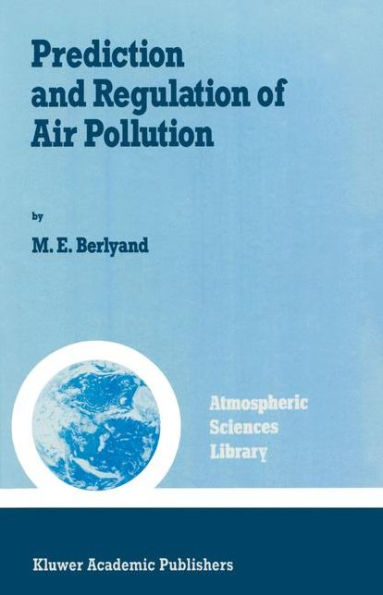Prediction and Regulation of Air Pollution
Investigations of atmospheric pollution have recently reached a new stage. In addition to the estimation and the monitoring of pollutant concentrations in the air around their sources, by way of observational data and also by calcu lations on the basis of theoretical research, it is now possible to make short term forecasts of air pollution and to use them to regulate industrial emissions. Many countries are interested in such forecasts. In the Soviet Union the organizations of the State Committee of the USSR for Hydrometeorology (Goskomgidromet) are carrying out a wide-scale scientific programme on the devising of methods to forecast atmospheric pollution. Prognostic groups are organized in territorial hydrometeocenters; in essence a new forecasting service has been established. Nowadays, in more than 200 towns of the USSR predictions are made and transmitted to large enterprises for the purpose of taking the necessary steps to preserve air qua lity. To ensure an operative working of this service, Methodological Instruc (1979) have been issued, as well as other instructions and guides. Wide tions scale verifications of proposed calculating methods have been made. Prob lems of forecasting and regulating air pollution have become evident lately in other countries as well. Much attention to these problems is payed by the World Meteorological Organization (WMO). They have been widely discussed in a number of international conferences and meetings for modelling and investigating pollutant distribution in the atmosphere. The number of publications on this subject is rapidly increasing.
1030007865
Prediction and Regulation of Air Pollution
Investigations of atmospheric pollution have recently reached a new stage. In addition to the estimation and the monitoring of pollutant concentrations in the air around their sources, by way of observational data and also by calcu lations on the basis of theoretical research, it is now possible to make short term forecasts of air pollution and to use them to regulate industrial emissions. Many countries are interested in such forecasts. In the Soviet Union the organizations of the State Committee of the USSR for Hydrometeorology (Goskomgidromet) are carrying out a wide-scale scientific programme on the devising of methods to forecast atmospheric pollution. Prognostic groups are organized in territorial hydrometeocenters; in essence a new forecasting service has been established. Nowadays, in more than 200 towns of the USSR predictions are made and transmitted to large enterprises for the purpose of taking the necessary steps to preserve air qua lity. To ensure an operative working of this service, Methodological Instruc (1979) have been issued, as well as other instructions and guides. Wide tions scale verifications of proposed calculating methods have been made. Prob lems of forecasting and regulating air pollution have become evident lately in other countries as well. Much attention to these problems is payed by the World Meteorological Organization (WMO). They have been widely discussed in a number of international conferences and meetings for modelling and investigating pollutant distribution in the atmosphere. The number of publications on this subject is rapidly increasing.
169.99
In Stock
5
1

Prediction and Regulation of Air Pollution
312
Prediction and Regulation of Air Pollution
312
169.99
In Stock

Product Details
| ISBN-13: | 9780792310006 |
|---|---|
| Publisher: | Springer Netherlands |
| Publication date: | 05/31/1991 |
| Series: | Atmospheric and Oceanographic Sciences Library , #14 |
| Edition description: | 1991 |
| Pages: | 312 |
| Product dimensions: | 6.10(w) x 9.25(h) x (d) |
From the B&N Reads Blog
